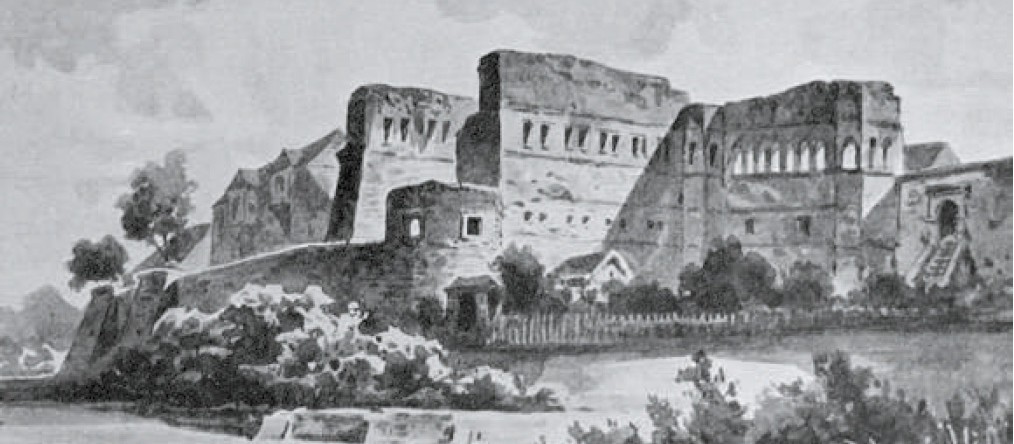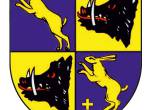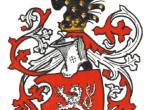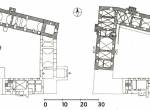Undoubtedly, there was a landowner's manor here at that time, where King Přemysl Otakar I issued a charter in 1218, in which he confirmed the privileges and possessions acquired by the Litoměřice Chapter in 1057. It is not known when the manor was rebuilt into a stone castle, which is still substantially preserved today and is the most important monument of Budyně. In 1316, Budyně was conquered by the followers of Henry of Lipá and therefore King John of Luxembourg. In 1336, the king exchanged the Budyně estate for beggars' goods with Zbyněk Zajíc of Valdeka, thus beginning the long era of this family in Budyně, which lasted until the beginning of the 17th century. In 1614, Jan Zbyněk Zajíc of Házmburk was forced to leave Budyně to his biggest creditor Adam of Šternberk due to debts, who subsequently merged the Budyně estate with the Líbochovice estate. In 1676 the estate passed into the hands of the Ditrichstein family, who in 1700 confirmed the Budyně family's earlier privileges. In 1759, the town was burnt down by the Prussians and in the following decades it suffered several more fires. Since 1848 Budyně has been a free town.
Besides the water castle, the most important landmarks of Buda include the originally Gothic Church of St. Wenceslas from the beginning of the 13th century, rebuilt in the third quarter of the 18th century to its current Baroque form, and the Church of Our Lady of the Snows, also originally Gothic (from the 14th century) and subsequently rebuilt in the 16th, 18th and 19th centuries.
Water Castle
The predecessor of the castle in Budyně nad Ohří was the Přemyslid manor. When the Budyně manor house turned into a stone castle we cannot determine for sure, but it happened at the latest during the late reign of Přemysl Otakar II in the second half of the 13th century. In 1316, Budyně was conquered by the followers of Henry of Lipá, and therefore King John of Luxembourg conquered it. In 1336, the king exchanged the Budyně estate for beggars' goods with Zbyněk Zajíc of Valdeka, thus beginning the long era of this family in Budyně, which lasted until the beginning of the 17th century. The centre of the extensive Hájíc estate for centuries was Házmburk Castle; Budyně Castle flourished most during the reign of Jan Hájíc of Házmburk, who lived there and expanded it after 1463, rebuilding it in the late Gothic style. The castle was rebuilt again, this time in the Renaissance style, under Jan Zbyněk Zajíc of Házmburk after 1585. Jan Zbyněk, however, became so indebted that in 1614 he was forced to leave Budyně to his biggest creditor Adam of Šternberk, who subsequently merged the Budyně estate with that of Libochovice. In 1676, the merged estate was acquired from the Sternbergs by Gundakar of Ditrichstein, who preferred Libochovice to Budyně. Budyně Castle then fell into disrepair and in 1823 part of its palace buildings were even demolished. It was saved from complete ruin only by repairs during the Herberstein family (who owned Budyně from 1858 to 1945) and from 1975 to 1990.
The Budyně castle, standing in the marshy terrain by the Ohře River, formed the northwest corner of the town complex, to whose fortifications it was bound. It was protected around its perimeter by a wall with key loopholes, the resistance of which was reinforced on the outer, western side by two round flanking towers and a special bastion-like front gate with an adjacent entrance. The main entrance to the complex was from the exit of the city through a gate in the wall and a bridge over the moat. The free-standing castle core had a four-winged layout with magnificent bay windows and two prismatic towers. One of these - as well as the south and east wings - was razed to the ground in 1823 and the moat on the side facing the town was filled in.
Opening hours
Summer operation (1 April - 31 October)
Open daily except Monday 10:30 - 12:30 and 13:00 - 17:00
Winter operation (1. 11. - 31. 3.)
The Water Castle and the Jand Museum are closed. It is possible to visit the castle courtyard from 8:00 am to 5:00 pm.
If you are interested in a tour outside opening hours, it is possible to arrange a tour by phone. Tours can be arranged for groups of more than 10 people.





